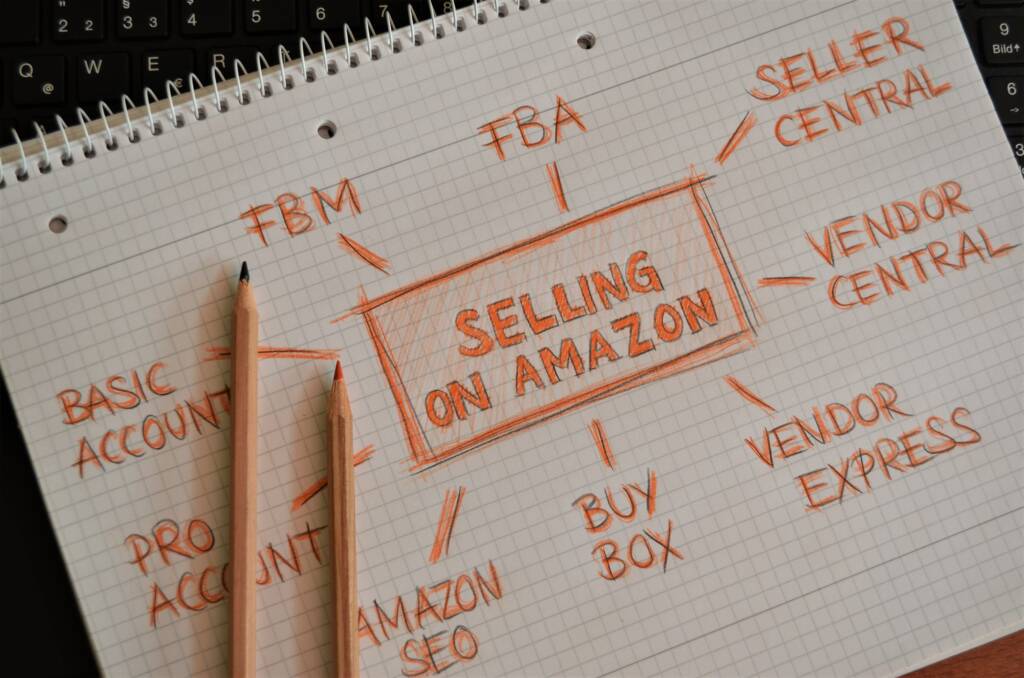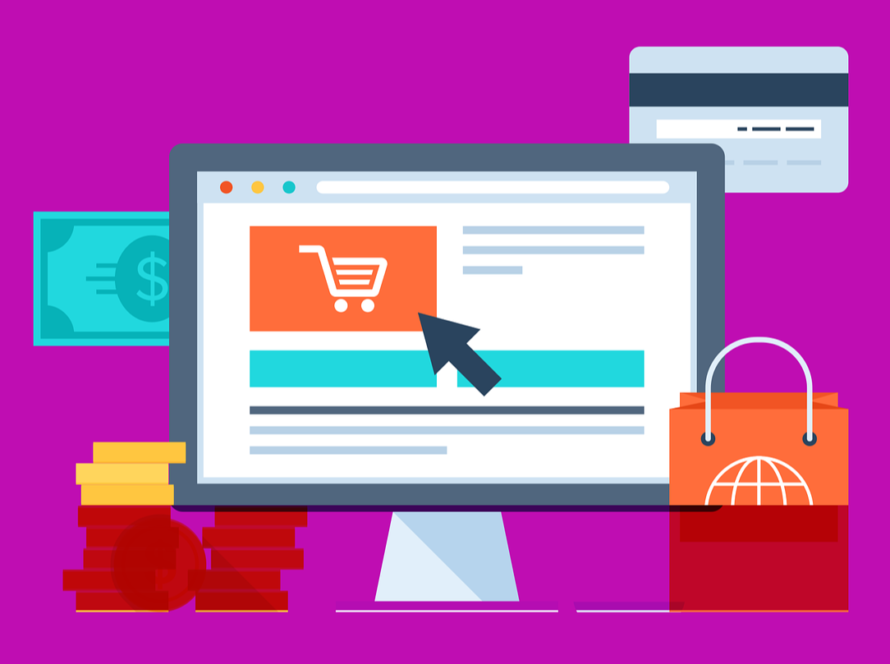Do you want to take advantage of the e-commerce industry and earn money online? Amazon provides a range of selling options, such as Fulfilment by Amazon (FBA) and Amazon Arbitrage. We’ll break down the details, the good and the not-so-good, to help you figure out which approach might be the best fit for your online selling adventure. Stick around as we unravel the mystery of Amazon arbitrage vs FBA in simple terms!
Understanding the concept of Amazon arbitrage
Amazon arbitrage – the art of savvy buying and selling on the world’s largest online marketplace. Amazon arbitrage involves finding products at lower prices, often from retail stores or online platforms, and reselling them on Amazon at a higher price to turn a profit.
How Does Amazon Arbitrage Work?
The concept is straightforward: scout for products that are priced lower than their potential selling price on Amazon. This could involve visiting brick-and-mortar stores, scouring online clearance sales, or tapping into various retail channels. Once you’ve secured a product at a favorable price, list it on Amazon and wait for interested buyers.
Key Steps in Amazon Arbitrage:
- Product Research: Identify products with a price gap between your sourcing channels and Amazon. Tools like price tracking apps or browser extensions can be valuable allies in this step.
- Sourcing: Acquire the chosen products at a lower cost through retail arbitrage (buying from physical stores), online arbitrage (purchasing from online retailers), or a combination of both.
- Listing on Amazon: Create product listings on Amazon, ensuring accurate descriptions, compelling images, and competitive pricing. Utilize keywords wisely to enhance visibility.
- Fulfillment: Choose between fulfilling orders yourself (Merchant Fulfilled) or utilizing Amazon’s FBA service, where Amazon handles storage, packing, and shipping.
Pros of Amazon Arbitrage:
- Low Entry Barrier: Anyone can start with relatively low initial investment.
- Flexibility: You can choose products and sourcing methods based on your preferences and resources.
- Quick Returns: If done right, you can see profits relatively quickly.
Cons of Amazon Arbitrage:
- Competition: The popularity of Amazon arbitrage means increased competition, especially for popular products.
- Market Fluctuations: Prices on Amazon can change rapidly, affecting profit margins.
- Risk of Account Issues: Violating Amazon’s policies, such as selling inauthentic products, can lead to account suspension.
In short, Amazon arbitrage offers an accessible entry point into the world of e-commerce. Success hinges on your ability to identify profitable opportunities, navigate competition, and adapt to the ever-evolving landscape of online selling.

An overview of FBA (Fulfillment by Amazon)
Fulfillment by Amazon (FBA) – a game-changing service that simplifies the logistics of running an e-commerce business. FBA is not just an acronym; it’s a comprehensive solution offered by Amazon to streamline the entire fulfillment process, from storage to shipping, allowing sellers to focus more on growing their businesses.
Understanding FBA:
At its core, FBA involves outsourcing the order fulfillment tasks to Amazon. This means that once you’ve selected the FBA option for your products, Amazon takes care of storing, packing, and shipping them to customers. Here’s a closer look at how FBA works:
1. Inventory Storage: Sellers send their products to Amazon’s fulfillment centers, where the items are stored until they are sold.
2. Order Processing: When a customer places an order, Amazon takes care of picking, packing, and shipping the product to the customer’s doorstep.
3. Customer Service: Amazon also handles customer service related to the order, including returns and inquiries.
Key Advantages of FBA:
- Prime Eligibility: Products fulfilled by Amazon are often eligible for Prime shipping, which can significantly boost visibility and sales.
- Time and Effort Savings: Sellers can focus on growing their business instead of managing day-to-day logistics.
- Customer Trust: The association with Amazon’s reliable and efficient fulfillment process can enhance customer trust.
- Global Reach: With Amazon’s vast network of fulfillment centers, sellers can reach customers worldwide.
Considerations with FBA:
- Costs: While FBA streamlines operations, it comes with associated fees. Sellers need to carefully assess these costs to ensure profitability.
- Inventory Management: Precise control of inventory is essential to prevent shortages or excess stock, ensuring a smooth flow of operations.
- Product Prep Requirements: Products sent to Amazon must meet specific packaging and labeling standards.
Is FBA Right for You?
Fulfillment by Amazon is an excellent option for many sellers, particularly those looking to scale their operations without the hassle of managing logistics. However, it’s essential to weigh the costs, consider your product’s characteristics, and evaluate your overall business strategy.
In the dynamic world of e-commerce, FBA stands out as a powerful tool, providing sellers with the means to offer efficient shipping, leverage the Prime badge, and enhance the overall customer experience.
Amazon Arbitrage vs FBA: Key differences
Let’s unravel the distinctions between Amazon arbitrage and FBA, two popular approaches in the e-commerce universe, to help you make an informed decision for your online selling venture. Here’s a detailed breakdown of the key differences between Amazon arbitrage and Fulfillment by Amazon (FBA):
| Aspect | Amazon Arbitrage | Fulfillment by Amazon (FBA) |
|---|---|---|
| Sourcing and Inventory Management | – Involves personally sourcing products at lower prices from various channels such as retail stores and online platforms. | – Sellers send their inventory to Amazon’s fulfillment centers, relying on Amazon to handle storage, packing, and shipping. FBA offers a hands-off approach to inventory management. |
| Costs and Fees | – Initial investment varies based on the products sourced. Sellers incur shipping and handling costs for their products. | – Involves fees for storage, order fulfillment, and other associated costs. While FBA simplifies logistics, sellers need to carefully consider and manage these fees. |
| Time and Effort | – Requires active involvement in sourcing, listing, and managing inventory. Sellers play a hands-on role in the entire process. | – Offers a more passive approach. Once products are sent to Amazon’s fulfillment centers, most logistical tasks are taken care of, allowing sellers to focus on other aspects of their business. |
| Prime Eligibility | – Prime eligibility depends on the individual seller’s shipping capabilities. | – Products fulfilled by Amazon are often Prime eligible, providing a competitive edge with faster shipping and enhanced visibility. |
| Scalability | – Scalability may be limited by the time and effort required for hands-on management, particularly as the business grows. | – Offers scalability by outsourcing the logistical aspects to Amazon. FBA allows sellers to handle a higher volume of orders efficiently. |
Choosing the Right Approach:
Deciding between Amazon arbitrage and FBA depends on your preferences, resources, and business goals. If you prefer a more hands-on approach, are mindful of costs, and enjoy the thrill of finding deals, Amazon arbitrage might be your fit. On the other hand, if you seek a scalable and streamlined solution with less hands-on involvement, FBA could be the optimal choice.
Understanding these key differences empowers you to make strategic decisions aligned with your unique business vision as you navigate the ever-evolving landscape of online selling.
How to make money through – Amazon Arbitrage
Embarking on the journey of making money through Amazon arbitrage vs. FBA is an exciting venture that demands a strategic approach. Here’s a step-by-step guide to help you navigate this lucrative terrain:
1. Research and Identify Profitable Products:
Begin by utilizing tools like Keepa, CamelCamelCamel, or other price-tracking apps to analyze the price histories of potential products on Amazon. Additionally, identify products with consistent demand and a significant price difference between sourcing channels and Amazon.
2. Choose Your Sourcing Method:
Explore the realm of retail arbitrage by visiting local stores, clearance sections, or discount outlets to uncover hidden gems. Additionally, consider online arbitrage by scouring various online marketplaces and retail websites for discounted products.
3. Price Calculation and Profit Margin:
Factor in all costs, including the purchase price, shipping, Amazon fees, and any other associated costs. Additionally, calculate your desired profit margin and ensure it aligns with your overarching business goals.
4. Set Up Your Seller Account on Amazon:
Begin your journey by creating an Amazon seller account if you don’t have one already. Additionally, choose between an Individual or Professional account, based on your anticipated sales volume.
5. List Your Products on Amazon:
Create accurate and compelling product listings with high-quality images and detailed descriptions. Additionally, optimize your product titles and descriptions with relevant keywords to enhance visibility on the platform.
6. Fulfillment Method:
Decide on your preferred fulfillment method, whether it be fulfilling orders yourself (Merchant Fulfilled) or opting for the more hands-off approach of Fulfillment by Amazon (FBA).
7. Monitor and Adjust:
Regularly monitor your listings, prices, and inventory levels for ongoing success. Additionally, be adaptable and adjust your pricing strategy based on market trends and the competitive landscape.
8. Scale Your Operation:
As you gain experience and confidence, consider scaling your operation by expanding your product range or exploring different sourcing methods. Additionally, explore avenues for building relationships with suppliers and retailers to access exclusive deals and discounts.
Tips for Success:
- Stay Informed:
- Keep abreast of market trends, product demand, and changes in Amazon policies for ongoing success.
- Build Relationships:
- Establish good relationships with suppliers and retailers to access exclusive deals and discounts, fostering long-term success.
- Manage Cash Flow:
- Efficiently manage your cash flow by reinvesting profits into new inventory and optimizing your product selection.
- Additionally, consider utilizing automation tools for tasks like repricing and inventory management to streamline your operations.
Embarking on the path of Amazon arbitrage vs. FBA involves a combination of strategic planning, adaptability, and staying informed. By incorporating these steps into your approach, you can navigate the world of e-commerce with confidence and carve out a profitable venture in the dynamic landscape of online selling.

How to make money through – Amazon FBA
Fulfillment by Amazon (FBA) requires a systematic approach and a keen understanding of the intricacies involved. Here’s a step-by-step guide to help you navigate the path to success:
1. Product Research and Selection:
Begin by conducting thorough market research to identify products with high demand and limited competition. Additionally, consider products that are lightweight, durable, and have the potential for a good profit margin.
2. Create an Amazon Seller Account:
If you don’t have one already, create an Amazon seller account and choose between an Individual or Professional account based on your business needs.
3. Source Products:
Find reliable suppliers or manufacturers to source your chosen products. This could involve working with wholesalers, private label manufacturers, or utilizing online platforms like Alibaba. Additionally, consider creating your own brand or private label for added differentiation.
4. Optimize Product Listings:
Craft compelling product listings with high-quality images, detailed descriptions, and relevant keywords. Utilize Amazon SEO best practices to enhance the visibility of your products on the platform.
5. Enroll in FBA:
Enroll in the FBA program, allowing Amazon to handle storage, packing, and shipping of your products. Prepare and label your products according to Amazon’s FBA requirements before sending them to the fulfillment center.
6. Pricing Strategy:
Develop a competitive pricing strategy that takes into account your costs, Amazon fees, and desired profit margin. Frequently assess and adapt your pricing strategy to remain competitive within the market.
7. Monitor Inventory and Restock:
Keep a close eye on your inventory levels to prevent stockouts and maintain a positive customer experience. Utilize Amazon’s inventory management tools to track sales velocity and plan for timely restocking.
8. Customer Service and Reviews:
Deliver outstanding customer service to cultivate positive reviews and bolster your reputation as a seller. Actively address customer inquiries, issues, and returns to maintain a high level of customer satisfaction.
9. Scale Your Business:
As you gain experience and build a solid foundation, consider expanding your product line or exploring new niches. Continuously evaluate market trends and adapt your strategy to stay ahead in the competitive e-commerce landscape.
Tips for Success:
- Stay Informed:
- Keep yourself updated on Amazon policies, market trends, and changes in customer behavior.
- Build a Brand:
- Consider building a brand identity for your products to establish a loyal customer base.
- Utilize Amazon Advertising:
- Leverage Amazon’s advertising platform to promote your products and increase visibility.
- Optimize Operations:
- Streamline your operations by using tools and software for inventory management, analytics, and order processing.
By following these steps and incorporating best practices, you can navigate the realm of Amazon FBA and build a successful e-commerce business.
Factors to consider when choosing between Amazon arbitrage and FBA
When confronted with the decision between Amazon arbitrage vs. FBA, numerous factors come into play, each carrying its weight in influencing the choice that aligns best with your business goals. Here are key considerations to weigh, employing transition words to guide you through the thought process when choosing between Amazon arbitrage and FBA:
1. Hands-On vs. Hands-Off Approach:
- Amazon Arbitrage: Involves a hands-on approach where you actively source, list, and manage inventory. This model is ideal for those who enjoy direct involvement in the selling process.
- FBA: Conversely, FBA offers a hands-off approach, outsourcing tasks like storage, packing, and shipping to Amazon. This option is suited for those seeking a more automated and scalable model.
2. Sourcing Preferences:
- Amazon Arbitrage: Thrives on finding deals through retail or online channels, requiring time and effort in scouting for discounted products.
- FBA: On the other hand, FBA allows for a more strategic sourcing approach. Products can be obtained from various channels, including wholesale or private label.
3. Initial Investment:
- Amazon Arbitrage: Generally involves a lower initial investment, making it accessible for those starting with limited capital.
- FBA: However, FBA may require a higher initial investment due to associated fees. This makes it a better fit for those with a more substantial budget.
4. Fulfillment Flexibility:
- Amazon Arbitrage: Provides flexibility in choosing your fulfillment method. You can fulfill orders yourself or explore third-party fulfillment services.
- FBA: In contrast, FBA offers a streamlined fulfillment process handled by Amazon, ensuring efficient storage, packing, and shipping.
5. Time Commitment:
- Amazon Arbitrage: Requires a significant time commitment for tasks like sourcing, listing, and managing inventory.
- FBA: Conversely, FBA frees up time as logistical tasks are handled by Amazon. This enables you to concentrate on other facets of your business.
6. Prime Eligibility:
- Amazon Arbitrage: Prime eligibility depends on your ability to offer fast and reliable shipping.
- FBA: In contrast, FBA products are often automatically Prime eligible, providing a competitive edge with faster shipping and enhanced visibility.
7. Risk Tolerance:
- Amazon Arbitrage: Involves the risk of fluctuating prices, market changes, and potential competition for popular products.
- FBA: On the flip side, FBA reduces certain risks as Amazon manages the logistical aspects, providing a more stable and scalable model.
8. Long-Term Goals:
- Amazon Arbitrage: Ideal for those looking for a flexible, entry-level approach to e-commerce or testing the waters before committing to a larger venture.
- FBA: In contrast, FBA is suited for those with long-term goals, seeking scalability, and aiming for a more automated and efficient business model.
The choice between Amazon arbitrage and FBA is a decision that hinges on your preferences, resources, and overall business vision. By considering these factors with the aid of transition words, you can make an informed choice that aligns with your goals and sets the stage for a successful venture in the world of e-commerce.

FAQs about Amazon arbitrage vs FBA
Q1: What sets Amazon arbitrage apart from FBA?
Amazon arbitrage involves a hands-on approach, where sellers actively source products independently, manage listings, and oversee the entire sales process. On the other hand, FBA, or Fulfillment by Amazon, takes a more hands-off approach. Sellers leverage Amazon’s infrastructure to handle storage, packing, and shipping, allowing for a more automated and scalable model.
Q2: Which method demands a lower initial investment? Amazon arbitrage vs FBA.
When it comes to initial investment, Amazon arbitrage tends to be more accessible for those with limited capital. This is because sellers can start small, sourcing products at lower prices without the immediate need for significant upfront costs. FBA, in contrast, may require a higher initial investment due to associated fees and the potential need for larger inventory.
Q3: How do the time commitments differ?
Engaging in Amazon arbitrage demands a hands-on investment of time. Sellers actively source products, create listings, and manage inventory. This method is ideal for those who enjoy direct involvement in the selling process. Conversely, FBA provides a more hands-off experience. While sellers need to plan and strategize, Amazon takes care of storage, packing, and shipping, freeing up time for other aspects of the business.
Q4: Is there a difference in Prime eligibility?
Prime eligibility plays a crucial role in product visibility and customer trust. In Amazon arbitrage, achieving Prime eligibility depends on the seller’s ability to offer fast and reliable shipping. On the flip side, FBA products are often automatically Prime eligible, giving them a competitive edge with faster shipping and increased visibility.
Q5: Which method is more scalable for long-term growth?
Amazon arbitrage serves as a flexible entry point into e-commerce or for testing the waters. It’s ideal for those looking for a manageable start. On the other hand, FBA is designed for long-term scalability. Leveraging Amazon’s fulfillment capabilities allows for a more automated and efficient business model as the operation expands.
Q6: Can one switch between Amazon arbitrage and FBA?
Yes, transitioning between Amazon arbitrage and FBA is entirely feasible. Sellers can adapt their strategy based on changing business needs. A well-thought-out plan and effective management are essential during the transition to ensure a seamless and successful shift.
Conclusion: Amazon arbitrage vs FBA
In conclusion, when contemplating the choice between Amazon arbitrage and Fulfillment by Amazon (FBA), several factors come into play. Firstly, consider your business goals. If you lean towards a hands-on, flexible start with a lower investment, Amazon arbitrage is a suitable option. On the contrary, if scalability, automation, and a more hands-off approach align with your aspirations, FBA might be the preferable choice.
Your risk tolerance is a critical consideration. Arbitrage comes with market and competition risks, while FBA offers a more stable model by outsourcing logistical tasks.
Don’t limit yourself to a singular approach; many successful sellers adopt a hybrid strategy, combining elements of both Amazon arbitrage and FBA. This provides diversification, mitigating risks and adapting to different market conditions.
Additionally, stay informed about market changes, Amazon policies, and emerging opportunities. Regularly reassess your chosen strategy to ensure it aligns with the evolving e-commerce landscape.
Lastly, test your chosen model on a smaller scale before fully committing. Analyze results, gather insights, and iterate your approach based on what works best for your business. In essence, the right choice between Amazon arbitrage and FBA is the one that complements your goals, resources, and approach to entrepreneurship.



